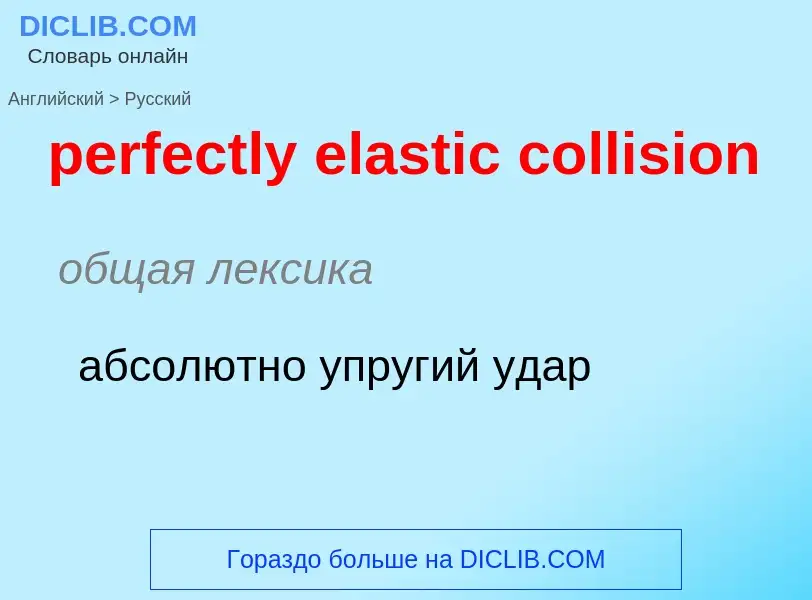Перевод и анализ слов искусственным интеллектом ChatGPT
На этой странице Вы можете получить подробный анализ слова или словосочетания, произведенный с помощью лучшей на сегодняшний день технологии искусственного интеллекта:
- как употребляется слово
- частота употребления
- используется оно чаще в устной или письменной речи
- варианты перевода слова
- примеры употребления (несколько фраз с переводом)
- этимология
perfectly elastic collision - перевод на русский
общая лексика
абсолютно упругий удар
общая лексика
неупругий удар
Определение
Википедия

An inelastic collision, in contrast to an elastic collision, is a collision in which kinetic energy is not conserved due to the action of internal friction.
In collisions of macroscopic bodies, some kinetic energy is turned into vibrational energy of the atoms, causing a heating effect, and the bodies are deformed.
The molecules of a gas or liquid rarely experience perfectly elastic collisions because kinetic energy is exchanged between the molecules' translational motion and their internal degrees of freedom with each collision. At any one instant, half the collisions are – to a varying extent – inelastic (the pair possesses less kinetic energy after the collision than before), and half could be described as “super-elastic” (possessing more kinetic energy after the collision than before). Averaged across an entire sample, molecular collisions are elastic.
Although inelastic collisions do not conserve kinetic energy, they do obey conservation of momentum. Simple ballistic pendulum problems obey the conservation of kinetic energy only when the block swings to its largest angle.
In nuclear physics, an inelastic collision is one in which the incoming particle causes the nucleus it strikes to become excited or to break up. Deep inelastic scattering is a method of probing the structure of subatomic particles in much the same way as Rutherford probed the inside of the atom (see Rutherford scattering). Such experiments were performed on protons in the late 1960s using high-energy electrons at the Stanford Linear Accelerator (SLAC). As in Rutherford scattering, deep inelastic scattering of electrons by proton targets revealed that most of the incident electrons interact very little and pass straight through, with only a small number bouncing back. This indicates that the charge in the proton is concentrated in small lumps, reminiscent of Rutherford's discovery that the positive charge in an atom is concentrated at the nucleus. However, in the case of the proton, the evidence suggested three distinct concentrations of charge (quarks) and not one.


